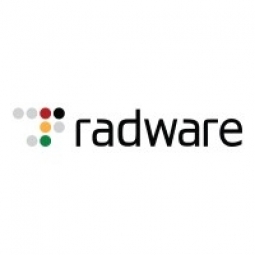Customer Company Size
Large Corporate
Region
- Europe
Country
- United Kingdom
Product
- Radware’s APSolute Application Delivery Switches
- Radware’s WSD
- Radware’s LinkProof
- Radware’s CertainT 100
Tech Stack
- SSL security
- ASIC based hardware
Implementation Scale
- Enterprise-wide Deployment
Impact Metrics
- Productivity Improvements
- Customer Satisfaction
Technology Category
- Application Infrastructure & Middleware - API Integration & Management
Applicable Industries
- Education
Applicable Functions
- Human Resources
Use Cases
- Infrastructure Inspection
- Cybersecurity
Services
- System Integration
About The Customer
The Universities and Colleges Admission Service (UCAS) is the UK’s central organization that processes applications for universities and colleges across the country. UCAS has been processing student applications online since 2002. Today, nearly all students are using the online application system with 98.5% submitting applications as of January 2006, using electronic means via www.ucas.com in comparison with 77.6% at the same point last year. The UCAS website was independently audited by ABC Electronic during November 2005. They verified that the total number of page impressions was 67,289,583 for that month.
The Challenge
The Universities and Colleges Admission Service (UCAS) is the UK’s central organization that processes applications for universities and colleges across the country. UCAS has been processing student applications online since 2002. Today, nearly all students are using the online application system with 98.5% submitting applications as of January 2006, using electronic means via www.ucas.com in comparison with 77.6% at the same point last year. The UCAS website was independently audited by ABC Electronic during November 2005. They verified that the total number of page impressions was 67,289,583 for that month. Due to the continuous surge in online applications UCAS deployed Radware’s APSolute Education solutions to guarantee the continuous, fault tolerant and secure operation of the UCAS website.
The Solution
To guarantee the high availability of UCAS’s IP applications, web servers and application servers, Radware’s award winning WSD was implemented. Through advanced APSolute OS Health Monitoring and Traffic Redirection, WSD detects network failures in real time and directs traffic to the best performing and operational servers. To enable the continuous growth of online operations, WSD affords for unlimited application scaling, handling growing traffic volumes and enabling service evolution without additional infrastructure investments. In order to ensure continuous and cost efficient Internet connectivity with UCAS’s multiple ISPs, Radware’s LinkProof was chosen. LinkProof delivers the high performance and optimized operation of UCAS’s multiple ISP links, delivering accelerated content delivery while controlling connectivity costs and extending advanced application acceleration to boost application response times for the best end user experience. At peak times, nearly 70% of all UCAS traffic is transaction based using SSL security. As a result, UCAS implemented Radware’s CertainT 100 to processes SSL Transactions at Gigabit speeds. CertainT 100 offloads traffic to an ASIC based hardware while compressing content and caching it to free expensive server CPU cycles for maximum performance, cost effective SSL handling and immediate ROI.
Operational Impact
Quantitative Benefit

Case Study missing?
Start adding your own!
Register with your work email and create a new case study profile for your business.
Related Case Studies.

Case Study
Revolutionizing Medical Training in India: GSL Smart Lab and the LAP Mentor
The GSL SMART Lab, a collective effort of the GSL College of Medicine and the GSL College of Nursing and Health Science, was facing a challenge in providing superior training to healthcare professionals. As clinical medicine was becoming more focused on patient safety and quality of care, the need for medical simulation to bridge the educational gap between the classroom and the clinical environment was becoming increasingly apparent. Dr. Sandeep Ganni, the director of the GSL SMART Lab, envisioned a world-class surgical and medical training center where physicians and healthcare professionals could learn skills through simulation training. He was looking for different simulators for different specialties to provide both basic and advanced simulation training. For laparoscopic surgery, he was interested in a high fidelity simulator that could provide basic surgical and suturing skills training for international accreditation as well as specific hands-on training in complex laparoscopic procedures for practicing physicians in India.

Case Study
IoT platform Enables Safety Solutions for U.S. School Districts
Designed to alert drivers when schoolchildren are present, especially in low-visibility conditions, school-zone flasher signals are typically updated manually at each school. The switching is based on the school calendar and manually changed when an unexpected early dismissal occurs, as in the case of a weather-event altering the normal schedule. The process to reprogram the flashers requires a significant effort by school district personnel to implement due to the large number of warning flashers installed across an entire school district.

Case Study
Implementing Robotic Surgery Training Simulator for Enhanced Surgical Proficiency
Fundacio Puigvert, a leading European medical center specializing in Urology, Nephrology, and Andrology, faced a significant challenge in training its surgical residents. The institution recognized the need for a more standardized and comprehensive training curriculum, particularly in the area of robotic surgery. The challenge was underscored by two independent studies showing that less than 5% of residents in Italian and German residency programs could perform major or complex procedures by the end of their residency. The institution sought to establish a virtual reality simulation lab that would include endourological, laparoscopic, and robotic platforms. However, they needed a simulator that could replicate both the hardware and software of the robotic Da Vinci console used in the operating room, without being connected to the actual physical console. They also required a system that could provide both basic and advanced simulation training, and a metrics system to assess the proficiency of the trainees before they performed surgical procedures in the operating theater.

Case Study
Edinburgh Napier University streamlines long-distance learning with Cisco WebEX
• Geographically dispersed campus made in-person meetings costly and inconvenient.• Distance-learning programs in Malaysia, India, and China required dependable, user-friendly online tools to maximize interaction in collaborative workspaces.• Virtual learning environment required a separate sign-in process, resulting in a significant administrative burden for IT staff and limited adoption of collaboration technology.

Case Study
8x increased productivity with VKS
Before VKS, a teacher would spend a lot of time showing a group of 22 students how to build a set of stairs within a semester of 120 hours. Along with not leaving the teacher much time to provide one-on-one support for each student to properly learn carpentry, it also left a considerable amount of room for error. Key information would be misinterpreted or lost as the class was taught in the typical show-and-tell way.

Case Study
Scalable IoT Empowering GreenFlex's Sustainable Growth
GreenFlex, a company that supports sustainable development, decarbonization, and energy efficiency, faced several challenges in its quest to expand its business. The company needed to deploy a robust and sustainable IoT technology to support its growth. It was crucial for them to monitor and control devices at customer sites in a safe and reliable manner. They also needed to integrate devices across a range of communication protocols and gather and act on data to meet efficiency targets. GreenFlex had previously built IoT capabilities into its digital platform, GreenFlexIQ, to monitor and manage customer sites remotely. However, they soon realized that they needed a new platform to support their ambitions. They needed a platform that could scale to connect more devices for production management and make it easier for the operations team to manage devices in the field.







